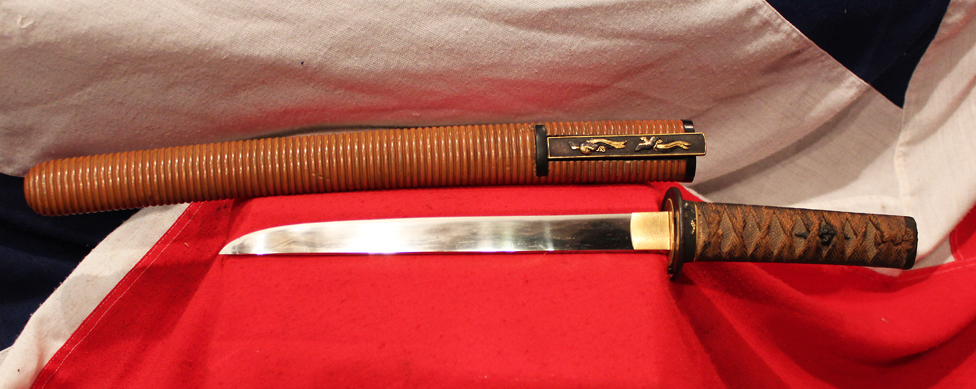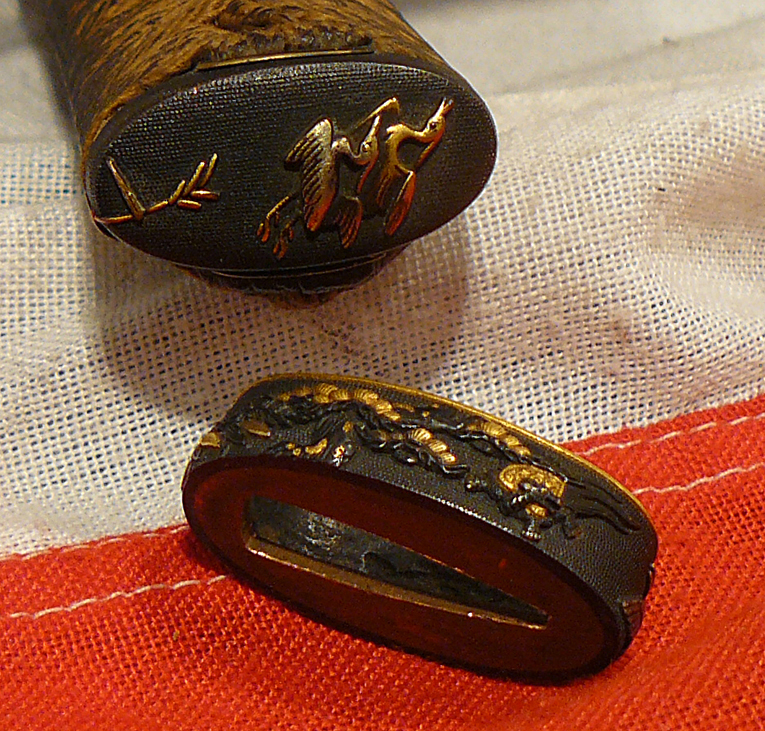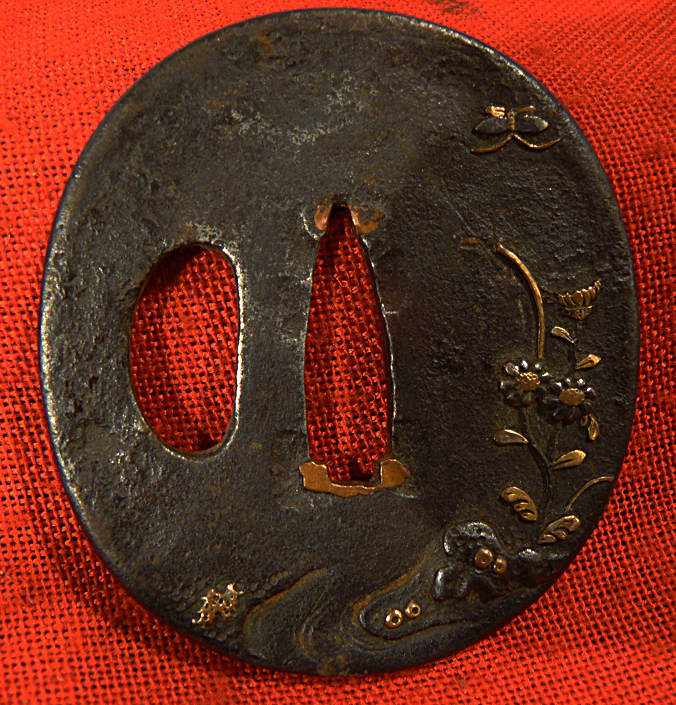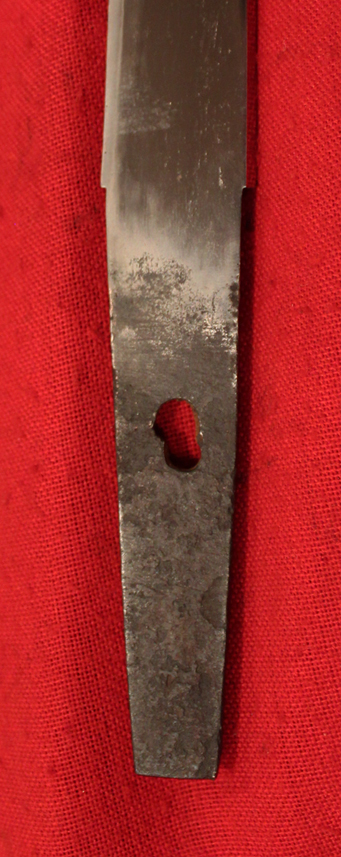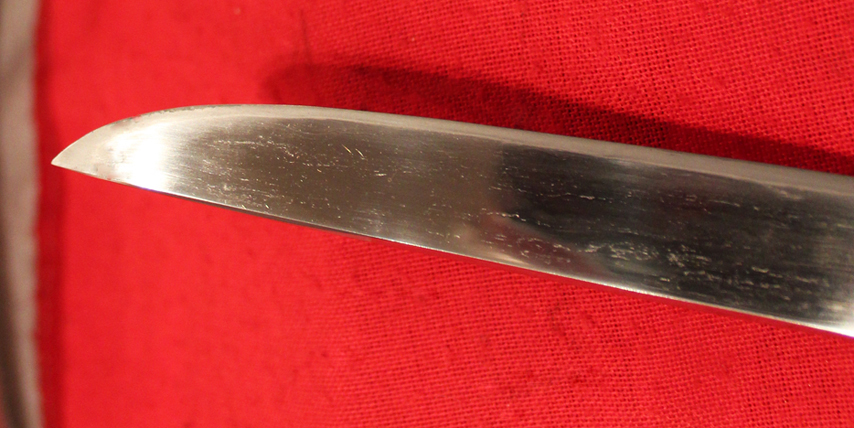A Most Beautiful Kamakura Tanto Around 700 Years Old Circa 1320.
A truly ancient blade around 700 years old. A special piece reduced for the benefit of our regular online viewers. With a very nice and typical, early narrow hamon to the it’s ancient blade, probably of Yamato tradition. Amazing to see that this wonderful samurai dagger is around 700 years old and looks almost as good as as it did when new. With very fine all original Edo period patinated copper mounts over-laid with pure gold and silver on a hand punched nanako ground, all following the theme of exotic birds, flowering trees and a turtle, and a pure gold pheonix onlaid onto its kodsuke utility knife set in the saya pocket. The extended length saya is uniformly deep ridged ribbing with a pale amber golden lacquer. The saya has a silver kurigata of turbulant water and the saya was deliberately longer than the blade to give the appearance that a longer blade is contained within it. This has an advantage of enabling a quicker withdrawal from the saya than it's appearance belies, and would be expected by an adversary. An Edo iron tsuba inlaid with gold flowers and butterflies. It has it's last original gold Edo wrap ito that shows age and areas of small discolouration. It could of course be replaced by us with new, Japanese, gold silk wrap, as might be preferred. Yamato tradition blades have their origins that lies in the province of Yamato, which for the Nara period, was regarded as the center of Japanese culture. The province is located south of Kyoto in the region of Kinai ( "Heart of the Capital area"). The city of Heijo-kyo (now Nara ) in the province of Yamato was then the capital of the Japanese Empire, so that it was here that many sword smiths settled. According to legend, thus came from the first Japanese sword forging of Amakuni and Amakura, the Yamato tradition. Ascribed to them is the Kogarasu Maru sword, which is probably the best known example of Yamato sword making.
With the transfer of the capital to Heian-kyo (now Kyoto ) in 794, many swordsmiths left the province. Around the year 1200 the area around Nara, increasingly bellicose religious sects were formed, so that the demand for swords increased. In the course of that, thus more sword smiths were active in that state again, to meet the needs of the armed warrior monks and samurai. For this reason, temple names for the different schools were mostly used, for example there was the Tegai-School named after the gate of the temple Tegai-mon -ji Todai . 55.5 cm long overall, 25.5 cm blade tsuba to tip.
Code: 22904



